Identity Property
The identity property, also known as the identity element, is a property that states that a specific mathematical operation leaves a number unchanged when it is combined with a certain value. The identity property differs based on the operation being performed (addition or multiplication).
Addition Identity Property
The identity property of addition states that the sum of any number and zero is the original number. In other words, when you add zero to any number, the result is that original number.
For example:
5 + 0 = 5
-3 + 0 = -3
Multiplication Identity Property
The identity property of multiplication states that the product of any number and one is the original number. In other words, when you multiply any number by one, the result is that original number.
For example:
7 * 1 = 7
-4 * 1 = -4
Study Guide
Here are some key points to remember about the identity property:
- Identity property of addition: a + 0 = a
- Identity property of multiplication: a * 1 = a
- The identity element for addition is 0, and for multiplication is 1.
- These properties are fundamental in understanding how numbers behave under addition and multiplication.
When working with problems involving addition or multiplication, always keep the identity properties in mind to simplify calculations and understand the behavior of the numbers involved.
Remember to apply the correct identity property based on the operation being performed, whether it's addition or multiplication.
Understanding the identity property is essential for building a strong foundation in arithmetic and algebraic concepts.
Practice problems:
- Calculate the following using the identity property of addition: 12 + 0 = ?
- Calculate the following using the identity property of multiplication: 5 * 1 = ?
By mastering the identity property and practicing related problems, you'll gain a solid understanding of this fundamental concept in mathematics.
.◂Math Worksheets and Study Guides Eighth Grade. Linear equations
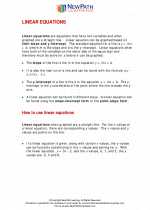
 Worksheet/Answer key
Worksheet/Answer key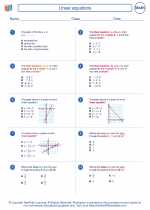
 Worksheet/Answer key
Worksheet/Answer key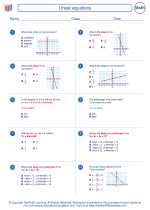
 Worksheet/Answer key
Worksheet/Answer key
 Worksheet/Answer key
Worksheet/Answer key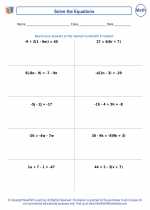
 Worksheet/Answer key
Worksheet/Answer key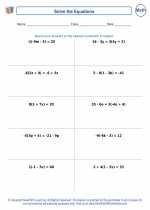
 Worksheet/Answer key
Worksheet/Answer key
